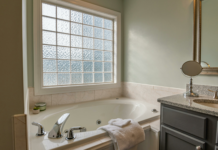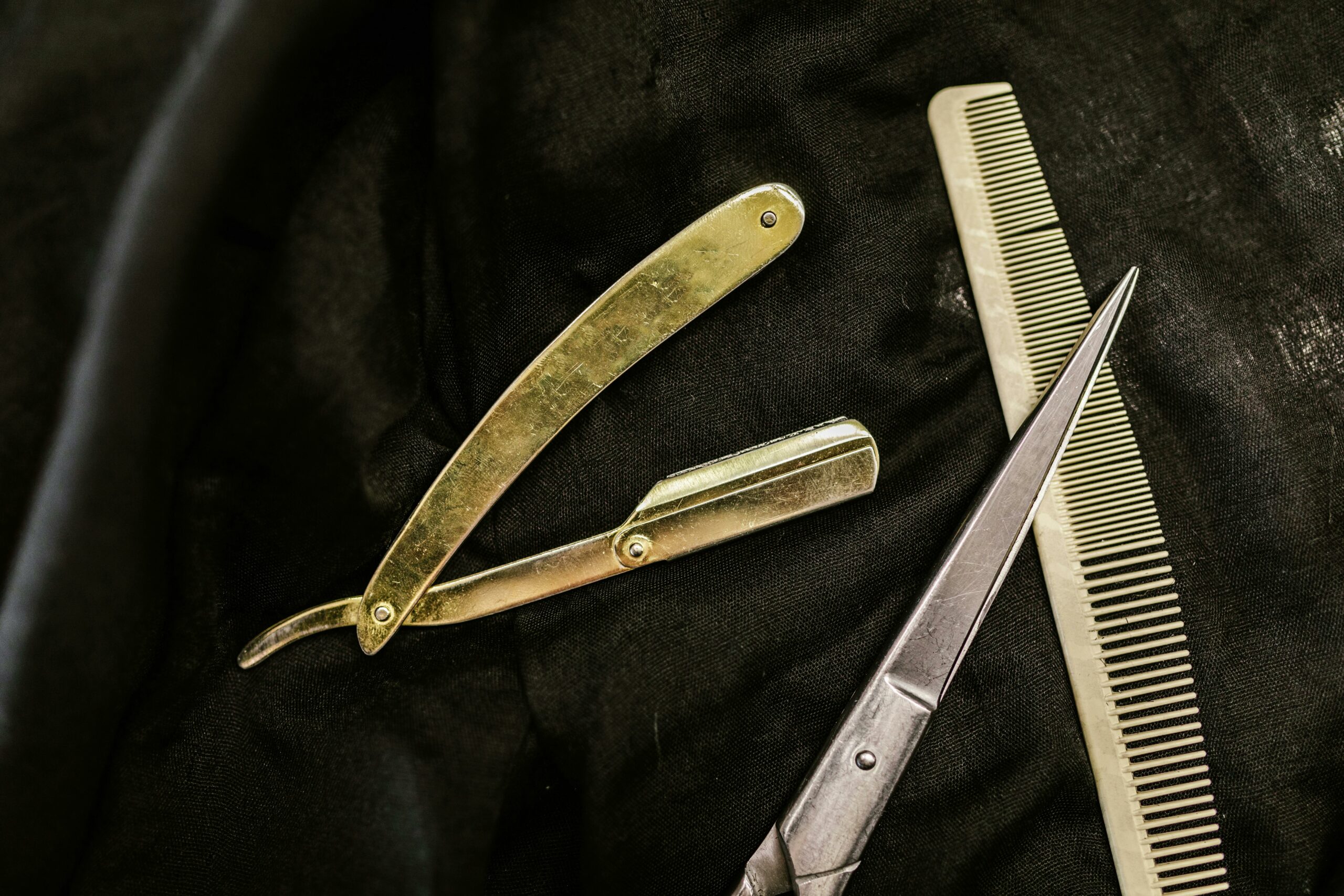Have you ever wondered why the Duxbury Clipper remains one of the most beloved classic boats even after decades? This timeless vessel continues to captivate boating enthusiasts and collectors alike with its unique charm and unmatched craftsmanship. But what exactly makes the Duxbury Clipper so special that it stands out in the sea of classic sailboats? From its sleek design to its rich maritime history, the Duxbury Clipper holds secrets that every boat lover wants to uncover. Whether you are a seasoned sailor or a curious newbie, exploring the Duxbury Clipper secrets reveals fascinating insights into why this classic boat has a passionate following. Could it be the blend of nostalgia, performance, or the iconic aesthetics that draw people in? Or maybe its story of resilience and timeless appeal in the boating world? Dive into the world of classic wooden boats and discover why the Duxbury Clipper continues to be a symbol of elegance and adventure. Stay tuned as we unravel the hidden gems and must-know facts about this legendary craft that’s more than just a boat—it’s a piece of living history!
Discover the Timeless Charm: 7 Reasons the Duxbury Clipper Remains a Beloved Classic Boat
Discover the Timeless Charm: 7 Reasons the Duxbury Clipper Remains a Beloved Classic Boat
If you ever wander near the New England shores, chances are you might catch a glimpse of a boat that seem to belong to another era. The Duxbury Clipper, with its graceful lines and nostalgic appeal, is one of those timeless vessels that continues to captivate boaters and enthusiasts alike. But what exactly makes this classic boat so special, and why does it still hold a dear place in the hearts of many? Let’s dive into the secrets behind the enduring charm of the Duxbury Clipper.
A Brief History of the Duxbury Clipper
The Duxbury Clipper was originally designed in the 1940s by William Crealock, who was inspired by traditional New England workboats but wanted to craft a sailboat that was both beautiful and practical. This design was born in Duxbury, Massachusetts, a town with rich maritime heritage, which gave the boat its name.
Unlike many modern sailboats, the Duxbury Clipper was built primarily from wood, showcasing craftsmanship that is rarely found today. The boat was intended for day sailing and coastal cruising, offering stability and simplicity rather than speed or racing performance. Over the decades, it evolved into a symbol of classic American boatbuilding.
7 Reasons Why the Duxbury Clipper Stays So Popular
-
Classic Design That Hasn’t Aged
The Duxbury Clipper’s lines are pure elegance — a combination of sleek curves and practical hull shape. Its design reminds people of a simpler time, when boats were handcrafted with love and attention. It doesn’t try to be flashy or overly technical, and that’s what makes it stand out. -
Exceptional Craftsmanship
Many of the original Clippers were built by skilled boatbuilders using traditional techniques like steamed bent wood frames and varnished mahogany decks. This level of craftsmanship gives each boat a unique personality that mass-produced fiberglass boats can’t match. -
Versatility for Different Waters
Whether you want to sail in calm bays or explore rocky coastlines, the Clipper handles it well. Its shallow draft allows it to navigate shallow waters, while the sturdy hull gives confidence in choppier seas. -
Easy to Sail for Beginners and Pros
The rigging is straightforward, making it a great choice for people new to sailing. Yet, experienced sailors appreciate the predictable handling and the joy of piloting a boat with a real “feel.” -
Community and Club Culture
Owners of Duxbury Clippers often form tight-knit communities. Sailing events and regattas dedicated to classic boats create a social atmosphere where enthusiasts share tips, stories, and restoration advice. -
Historical Significance
The boat represents a link to New England’s maritime past, echoing the days when wooden boats ruled the waters. Owning or sailing a Duxbury Clipper is like holding a piece of history that’s alive and moving. -
Investment in Timelessness
Unlike trend-driven vessels, the Clipper’s value tends to be stable or even appreciate over time. Collectors and classic boat lovers recognize its status as a collectible item.
What Makes the Duxbury Clipper Different From Other Classic Boats?
To understand why the Clipper stands out, let’s compare it with some other classic sailboats in a simple table format:
| Boat Model | Primary Material | Intended Use | Draft (feet) | Typical Length (feet) |
|---|---|---|---|---|
| Duxbury Clipper | Wood | Day sailing, coastal | 2.5 | 22-25 |
| Cape Cod Catboat | Wood | Casual sailing | 1.5 | 19-21 |
| Herreshoff 12 1/2 | Wood | Racing, day sail | 3.0 | 25 |
| Snipe | Fiberglass | Racing | 2.0 | 15 |
From this, you can see the Clipper balances size, functionality, and traditional aesthetics in a way few others do. It is bigger than many typical day sailers but remains manageable and easy to handle.
Practical Examples of Why People Love Their Duxbury Clippers
- Family Outings: Many owners cherish weekend sails with family, appreciating the boat’s safe design and comfortable cockpit. Kids get a chance to learn sailing basics without the stress of complicated controls.
- Restoration Projects: Some enthusiasts enjoy bringing old Clippers back to life, finding joy in woodworking and preserving maritime heritage.
- Local Regattas: Participating in classic boat races or exhibitions gives owners a sense of pride and belonging. It also helps keep the tradition alive for new generations.
The Secret Ingredients
How the Duxbury Clipper’s Unique Design Sets It Apart in Vintage Sailing Communities
The Duxbury Clipper has been turning heads and stealing hearts in the vintage sailing communities for decades. This classic boat, with its distinctive design and storied history, isn’t just another vessel in the sea. It’s a symbol of craftsmanship, tradition, and a unique approach to sailing that many modern boats don’t quite capture. If you ever wonder why so many sailors and collectors hold the Duxbury Clipper in such high regard, it comes down to a mix of design secrets, historical significance, and practical sailing qualities that sets it apart from the crowd.
What Makes the Duxbury Clipper’s Design So Unique?
The Duxbury Clipper was created in the 1940s by the boat designer Thomas M. Leach. He wanted to build a boat that was both beautiful and functional, one that could handle the choppy waters of New England but also look elegant at the dock. The result was a small sailboat, about 18 feet long, with a shallow draft and a distinctive sharp bow and rounded stern. This design allows it to sail close to the wind, which many similar sized boats struggle with.
Some of the key features that make the Duxbury Clipper stand out are:
- Shallow Draft: This means it can sail in waters that are too shallow for other boats its size.
- Flat Bottom Hull: Gives it stability but still allows it to glide smoothly on the water.
- Simple Rigging: Uses a cat rig with a single sail, making it easier to handle for beginners and experts alike.
- Graceful Lines: The shape of the boat is both practical and aesthetically pleasing, which is why it’s often considered a “classic beauty” in sailing circles.
Unlike many modern sailboats that prioritize speed over style, the Duxbury Clipper balances both, making it a favorite among those who sail for pleasure rather than competition.
Duxbury Clipper Secrets: Why This Classic Boat Captivates Everyone
There are some secrets to the Duxbury Clipper’s charm that goes beyond just how it looks or sails. It’s got personality, history, and a community built around it that attracts vintage boat lovers from all over.
- Ease of Maintenance: The Clipper’s simple design means it’s easier to maintain than many other wooden boats. It doesn’t require complex systems or expensive parts, which makes it more accessible for hobbyists and restorers.
- Community and Culture: Owners of Duxbury Clippers often form close-knit groups, sharing tips, stories, and organizing regattas. This sense of belonging make the experience more than just about sailing.
- Versatility: It can be rowed, sailed, or even fitted with a small outboard motor. This flexibility means it can be used for different activities, from leisurely day sails to fishing trips.
- Timeless Appeal: The design hasn’t changed much since its inception, which appeals to those who appreciate tradition and the nostalgia of classic boat building.
Historical Context: How the Duxbury Clipper Came to Be
During the 1940s, boat building was undergoing changes due to new materials and technologies. But Thomas Leach, the designer of the Duxbury Clipper, decided to stick with tried-and-true wooden boat traditions while incorporating some innovative features. His goal was to create a boat easily built by amateurs and affordable for the average sailor.
The Clipper was named after the town of Duxbury, Massachusetts, known for its rich maritime history. The boat quickly gained popularity locally before spreading to other parts of the East Coast. Its design was influenced by traditional Cape Cod catboats but with refinements that improved performance and handling.
Comparing the Duxbury Clipper to Other Vintage Boats
If you put the Duxbury Clipper side-by-side with other vintage sailboats, you’ll notice some clear differences. Here’s a simple comparison table to illustrate some of the key points:
| Boat Model | Length (ft) | Draft (ft) | Sail Plan | Notable Trait |
|---|---|---|---|---|
| Duxbury Clipper | 18 | 1.5 | Single Cat Rig | Shallow draft, easy to sail |
| Cape Cod Catboat | 16-20 | 3-4 | Gaff Rig | Deeper draft, traditional look |
| Snipe (Racing Dinghy) | 15.5 | 2.5 | Sloop Rig | Racing-oriented, faster |
| Herreshoff 12 1/2 | 12.5 | 3 | Gaff Rig | Classic design, heavier build |
What the Duxbury Clipper really excels at is combining ease of use with shallow water capabilities. Unlike the Cape Cod Catboat, which has a deeper
Exploring the Rich History of the Duxbury Clipper: A Nautical Icon in English Waters
Exploring the Rich History of the Duxbury Clipper: A Nautical Icon in English Waters
When you think about classic boats that have sailed through the waters of England, the name “Duxbury Clipper” might not be the first that pops into your mind. But this elegant vessel, with its sleek lines and strong heritage, has been capturing hearts of sailors and boat enthusiasts alike for decades. Duxbury Clipper, often praised for its unique design and storied past, stand as a symbol of maritime craftsmanship that bridged both tradition and innovation.
What is the Duxbury Clipper?
The Duxbury Clipper is a type of sailboat originally designed and built in the mid-20th century. Its hull shape and rigging style make it instantly recognizable. The boat was mostly used for leisure sailing, coastal cruising, and sometimes even racing along the English coastline. Its name comes from Duxbury, a place in Massachusetts, USA, but the boat itself found a second home in English waters, where it became a beloved icon.
- Length: Approximately 30 feet
- Beam (width): Around 8 to 9 feet
- Rig: Gaff rig or Marconi rig depending on the version
- Material: Originally wooden, but some later versions used fiberglass
- Usage: Coastal cruising, day sailing, occasional racing
Historical Roots of the Duxbury Clipper
The origins of the Duxbury Clipper traced back to early 1900s, but it was the 1940s and 1950s that saw its rise in popularity. The design was heavily influenced by traditional New England fishing boats and pilot cutters, known for their stability and seaworthiness. What made the Duxbury Clipper stand out was how it adapted those rugged working boats into a more comfortable yacht that anyone could sail.
In England, post-World War II, there was a growing interest in leisure sailing. Many people wanted boats that could handle the often rough and unpredictable English Channel and coastal waters. The Duxbury Clipper fit perfectly in this demand, offering a balance between performance and comfort. Builders in England began to produce their own versions, sometimes modifying the original plans to suit local needs and materials availability.
Duxbury Clipper Secrets: Why This Classic Boat Captivates Everyone
There is no single reason why the Duxbury Clipper has such appeal; its charm lies in a combination of factors that resonated with sailors and collectors.
-
Timeless Design
The boat’s design feels classic but never outdated. Its sharp bow and elegant sheerline give it a graceful look on the water that other boats often lack. -
Seaworthiness
Thanks to its robust hull and balanced sail plan, the Duxbury Clipper can handle a variety of sea conditions. Many owners have stories of sailing through rough weather without worries, trusting the boat’s construction. -
Ease of Handling
Though it looks like a traditional clipper, the Duxbury Clipper is surprisingly easy to sail. Its rigging is straightforward and can be managed by small crews or even single-handed sailors. -
Community and Heritage
Owning a Duxbury Clipper often means becoming part of a tight-knit community. Clubs and gatherings happen regularly, where owners share tips, restoration stories, and tales from the sea.
Comparison: Duxbury Clipper vs Other Classic Sailboats
| Feature | Duxbury Clipper | Classic English Cutter | Traditional New England Sloop |
|---|---|---|---|
| Length | ~30 feet | 25-35 feet | 20-30 feet |
| Hull Material | Wood (original), Fiberglass (later) | Wood | Wood |
| Rigging Style | Gaff or Marconi | Gaff or Bermuda | Bermuda |
| Intended Use | Coastal cruising, day sailing | Coastal and offshore racing | Fishing and leisure |
| Ease of Handling | Moderate | Requires experienced crew | Generally easy |
| Popularity Today | Niche but growing | Established classic | Mostly historical |
Practical Examples of Duxbury Clipper in Action
Imagine a sunny afternoon off the coast of Cornwall. A Duxbury Clipper cuts through the waves, its sails billowing in the steady breeze. The boat’s balanced design allow it to tack smoothly around the bay, giving the skipper confidence in steering through narrow channels. Meanwhile, family and friends on board enjoy the spacious cockpit and comfortable cabin below deck.
In another scenario, a small group of enthusiasts participate in a regatta featuring classic boats. The Duxbury Clipper might not be the fastest, but its reliable performance and beautiful lines make it a crowd favorite. After racing, owners gather to share stories
Top 5 Maintenance Tips to Keep Your Duxbury Clipper Sailing Smoothly for Decades
The Duxbury Clipper, a classic sailboat that has been charming sailors for generations, is more than just a vessel—it’s a piece of maritime history that continues to inspire passion among boaters around New York and beyond. If you ever seen one glide across the water, you know why it captivates everyone who lays eyes on it. But owning a Duxbury Clipper also means committing to its upkeep so it can sail smoothly for decades to come. Here, we explore the top 5 maintenance tips to keep your Duxbury Clipper in tip-top shape, along with some secrets behind why this classic boat remains so beloved.
Why the Duxbury Clipper Stands Out
Before diving into maintenance, it’s good to understand what makes the Duxbury Clipper so special. Designed by Thomas Gillmer in the 1960s, the Duxbury Clipper is a traditional catboat, known for its single sail and wide beam. This design provides stability and ease of handling, making it perfect for both beginners and experienced sailors.
Some key features that make the Duxbury Clipper unique:
- Classic Catboat Rigging: One sail rigged on a single mast placed far forward.
- Wide Beam: Offers stability and spacious cockpit.
- Shallow Draft: Allows the boat to navigate shallow waters easily.
- Wooden Construction: Many models are traditionally built with wood, adding to its timeless appeal.
The boat’s blend of simplicity, elegance, and rugged construction creates a sailing experience that’s hard to match, which is why it captivates everyone from casual weekend sailors to serious maritime enthusiasts.
Top 5 Maintenance Tips for Your Duxbury Clipper
Keeping a Duxbury Clipper sailing smoothly ain’t always easy, but with regular care, it can last for decades. Here are five essential maintenance tips:
-
Regular Hull Inspection and Cleaning
The hull often gets fouled with barnacles, algae, or dirt, especially if you leave your boat in the water for long periods. Inspect the hull monthly to check for cracks, blisters, or rot (if wooden), and clean it thoroughly to prevent damage. -
Preserve the Woodwork
Many Duxbury Clippers have wooden hulls or trim, which need special care. Sanding, varnishing, or painting protect the wood from moisture and UV damage. Don’t skip this step; neglecting wood maintenance can lead to costly repairs. -
Check and Maintain Rigging and Sails
The single sail and rigging must be inspected regularly for tears, frayed lines, or rusted fittings. Replace any damaged parts immediately to avoid accidents or poor sailing performance. -
Keep the Rudder and Centerboard Functional
These components are crucial for steering and stability. Make sure the rudder moves freely and the centerboard raises and lowers smoothly. Lubricate moving parts and check for any signs of wear. -
Protect Against Moisture Inside the Boat
Moisture buildup inside the hull can cause mold or wood rot. Use dehumidifiers or moisture absorbers when the boat is docked. Also, check the bilge pump regularly to prevent water accumulation.
Duxbury Clipper Maintenance Checklist
Here’s a quick checklist to keep handy during your maintenance routine:
- Inspect hull for cracks, blisters, and marine growth
- Clean hull every 4-6 weeks during sailing season
- Sand and varnish wood surfaces annually
- Examine sailcloth for holes or frays before each trip
- Check shrouds, stays, and turnbuckles for tightness and rust
- Lubricate rudder and centerboard pivot points quarterly
- Test bilge pump operation monthly
- Use moisture absorbers inside cabin when not in use
Comparing the Duxbury Clipper to Other Classic Sailboats
How does the Duxbury Clipper compare to other classic sailboats? Here’s a simple comparison table highlighting some differences:
| Feature | Duxbury Clipper | Cape Cod Catboat | Herreshoff 12½ |
|---|---|---|---|
| Rig Type | Single sail catboat | Single sail catboat | Gaff rigged sloop |
| Beam Width | Wide (for stability) | Wide | Narrower |
| Draft | Shallow | Shallow | Moderate |
| Construction Materials | Wood or fiberglass | Wood or fiberglass | Primarily wood |
| Ease of Handling | Very easy | Easy | Moderate |
| Popularity | High with classic boat lovers | High in New England | High among classic sailors |
This table shows why many choose the Duxbury Clipper for its stability and ease of use, especially in shallow waters common around New
Why Every Sailing Enthusiast Should Experience the Duxbury Clipper at Least Once
Why Every Sailing Enthusiast Should Experience the Duxbury Clipper at Least Once
For sailing lovers, there is a special kind of magic that comes from being on the water, wind in your face, and the sound of waves against the hull. But not all boats are made equal. If you ever sail near New England, you probably heard of the Duxbury Clipper. This classic boat is much more than a vessel; it’s an experience that many sailors have found irresistible. But why does the Duxbury Clipper captivate so many people, both beginners and seasoned sailors alike? Let’s dive into the secrets behind this iconic craft.
What is the Duxbury Clipper?
The Duxbury Clipper is a traditional wooden sailboat originally designed in the early 20th century. It was named after Duxbury, Massachusetts, a town known for its maritime history. Unlike modern fiberglass yachts, the Duxbury Clipper keeps an old-world charm that’s hard to find today. It measures typically around 22 feet, making it perfect for day sailing and coastal cruising.
Some key features of the Duxbury Clipper are:
- Classic gaff rig sail plan
- Wooden hull construction, mostly cedar and mahogany
- Shallow draft for easy access to coastal waters and bays
- Stable and forgiving handling, great for learning sailors
- Beautiful craftsmanship often done by hand
This boat was originally popular among fishermen and leisure sailors in the Northeast, but its timeless design has spread to sailing clubs and private owners all over the East Coast. If you ever get the chance to sail one, you probably won’t want to forget the feeling.
Duxbury Clipper Secrets: Why This Classic Boat Captivates Everyone
There are several reasons why so many sailing enthusiasts fall in love with the Duxbury Clipper. Some of these are practical, some are emotional, but all add up to a unique sailing experience.
-
Heritage and History
Sailing the Duxbury Clipper is like stepping back in time. The design is rooted in traditional boatbuilding techniques, and many of these boats were handcrafted by local craftsmen. This connection to maritime history makes every journey feel more meaningful. -
Sailing Simplicity
The rigging is straightforward, making it easier for beginners to learn the ropes (literally). The gaff rig provides good power without being overwhelming, perfect for those who want to improve their sailing skills without too much complexity. -
Stability and Safety
Because of her hull shape and weight distribution, the Clipper is incredibly stable. This means it handles well even in choppy waters, making it a safer choice for families or those less confident in rough conditions. -
Aesthetic Appeal
Look at the Duxbury Clipper, and you’ll see an artwork in motion. The varnished wooden decks, gleaming brass fittings, and classic paint schemes make it one of the prettiest boats you’ll see in any harbor. -
Community and Culture
Owning or sailing a Duxbury Clipper often means joining a community of enthusiasts who love to share stories, tips, and organize regattas or social events. This camaraderie adds a social layer that enriches the sailing experience.
Historical Context: Duxbury Clipper Through the Years
The Duxbury Clipper was designed during a time when sailboats were transitioning from working boats to leisure crafts. Around the 1920s and 30s, boatwrights in Duxbury and other coastal towns started to create vessels that combined utility with beauty.
The Clipper’s popularity grew steadily because it was affordable, easy to maintain, and versatile. Over the decades, many were restored and preserved, and today they are considered classics. Modern builders sometimes replicate the design, but the original wooden boats remain the most treasured.
Comparing the Duxbury Clipper to Other Classic Sailboats
| Feature | Duxbury Clipper | Cape Cod Catboat | Herreshoff 12½ |
|---|---|---|---|
| Length | ~22 feet | ~16-18 feet | ~12.5 feet |
| Rig Type | Gaff rig | Gaff rig | Gaff rig |
| Hull Material | Wood (cedar, mahogany) | Wood | Wood |
| Draft | Shallow (~2 feet) | Shallow (~2 feet) | Shallow (~2 feet) |
| Stability | High | Moderate | Moderate |
| Intended Use | Day sailing, coastal | Day sailing, casual | Day sailing, racing |
| Historical Popularity | Northeast US | Cape Cod region | New England |
This little table shows that while the Duxbury Cl
Conclusion
In conclusion, the Duxbury Clipper stands out as a remarkable vessel that combines historical significance with modern craftsmanship. Throughout this article, we explored its rich maritime heritage, distinctive design features, and the dedicated efforts to preserve its legacy. Whether admired for its impressive speed, elegant lines, or role in advancing 19th-century trade, the Duxbury Clipper continues to captivate sailing enthusiasts and historians alike. Its story is not only a testament to nautical innovation but also a reminder of the enduring spirit of exploration and adventure on the seas. For those intrigued by maritime history or passionate about sailing, visiting the Duxbury Clipper or supporting preservation initiatives offers a unique opportunity to connect with this captivating piece of nautical heritage. Embrace the chance to learn more and keep the legacy of the Duxbury Clipper alive for future generations to appreciate and enjoy.






